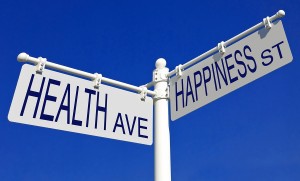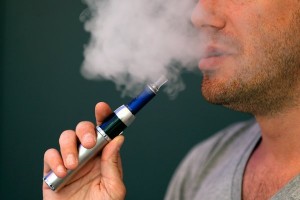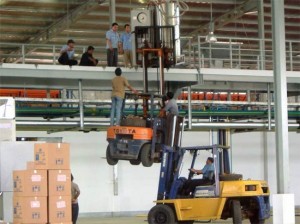 Respirable crystalline silica – very small particles at least 100 times smaller than ordinary sand you might encounter on beaches and playgrounds – is created during work operations involving stone, rock, concrete, brick, block, mortar, and industrial sand. Exposures to respirable crystalline silica can occur when cutting, sawing, grinding, drilling, and crushing these materials. These exposures are common in brick, concrete, and pottery manufacturing operations, as well as during operations using industrial sand products, such as in foundries, sand blasting, and hydraulic fracturing (fracking) operations in the oil and gas industry.
Respirable crystalline silica – very small particles at least 100 times smaller than ordinary sand you might encounter on beaches and playgrounds – is created during work operations involving stone, rock, concrete, brick, block, mortar, and industrial sand. Exposures to respirable crystalline silica can occur when cutting, sawing, grinding, drilling, and crushing these materials. These exposures are common in brick, concrete, and pottery manufacturing operations, as well as during operations using industrial sand products, such as in foundries, sand blasting, and hydraulic fracturing (fracking) operations in the oil and gas industry.
Month: March 2014
Happiness & Health – Understanding the Connection
 Studies show that a person’s health is one of the strongest predictors of happiness. But the link between health and happiness is complex. Research shows little correlation between a person’s objective health — as defined by medical assessment — and happiness. It’s our subjective health — how we view our health — that affects our well-being. So is happiness all in your head?
Studies show that a person’s health is one of the strongest predictors of happiness. But the link between health and happiness is complex. Research shows little correlation between a person’s objective health — as defined by medical assessment — and happiness. It’s our subjective health — how we view our health — that affects our well-being. So is happiness all in your head?
Not necessarily. For example, adverse changes in health do have a negative impact on happiness levels, at least temporarily. Poor health has the potential to significantly affect almost every aspect of your life: your independence, your self-image, your personal relationships, your ability to work and carry out basic daily activities. So it’s no surprise that when your health takes a hit, your happiness does as well.
But people are resilient. We become accustomed to new life circumstances, good or bad. We adapt. Within a month or two of an adverse health event, most people have gravitated back toward the level of happiness they enjoyed before their health took a turn for the worse.
When the change in health status is severe, however — for example, involving chronic pain or multiple disabilities — the impact on happiness can be long lasting.
And both physical health and emotional health influence happiness. Mood disorders diminish quality of life even more than chronic physical ailments, such as arthritis, heart disease, and diabetes.
via Happiness & Health – Understanding the Connection – Sharecare.
Workplace Health – Ergonomics
 Ergonomics is the science of fitting workplace conditions and job demands to the capability of the working population. The goal of ergonomics is to reduce stress and eliminate injuries and disorders associated with the overuse of muscles, bad posture, and repeated tasks. A workplace ergonomics program can aim to prevent or control injuries and illnesses by eliminating or reducing worker exposure to WMSD risk factors using engineering and administrative controls. PPE is also used in some instances but it is the least effective workplace control to address ergonomic hazards. Risk factors include awkward postures, repetition, material handling, force, mechanical compression, vibration, temperature extremes, glare, inadequate lighting, and duration of exposure. For example, employees who spend many hours at a workstation may develop ergonomic-related problems resulting in musculoskeletal disorders (MSDs).
Ergonomics is the science of fitting workplace conditions and job demands to the capability of the working population. The goal of ergonomics is to reduce stress and eliminate injuries and disorders associated with the overuse of muscles, bad posture, and repeated tasks. A workplace ergonomics program can aim to prevent or control injuries and illnesses by eliminating or reducing worker exposure to WMSD risk factors using engineering and administrative controls. PPE is also used in some instances but it is the least effective workplace control to address ergonomic hazards. Risk factors include awkward postures, repetition, material handling, force, mechanical compression, vibration, temperature extremes, glare, inadequate lighting, and duration of exposure. For example, employees who spend many hours at a workstation may develop ergonomic-related problems resulting in musculoskeletal disorders (MSDs).
via CDC – Workplace Health – Implementation – Work-Related Musculoskeletal Disorders (WMSD) Prevention.
What Not To Do On Facebook When You’re Job Searching
 Privacy is an issue on Facebook, in general, but its even more of an issue when youre job searching. If youre not careful, everything you post on Facebook can be seen by your current employer or a prospective employer. Inopportune comments and/or inappropriate photos have cost job seekers offers and have caused employees to be fired.
Privacy is an issue on Facebook, in general, but its even more of an issue when youre job searching. If youre not careful, everything you post on Facebook can be seen by your current employer or a prospective employer. Inopportune comments and/or inappropriate photos have cost job seekers offers and have caused employees to be fired.
When To Conduct an Accident/Incident Investigation
 All incidents, whether a near miss or an actual injury-related event, should be investigated. Near miss reporting and investigation allow you to identify and control hazards before they cause a more serious incident. Accident/incident investigations are a tool for uncovering hazards that either were missed earlier or have managed to slip out of the controls planned for them. It is useful only when done with the aim of discovering every contributing factor to the accident/incident to “foolproof” the condition and/or activity and prevent future occurrences. In other words, your objective is to identify root causes, not to primarily set blame.
All incidents, whether a near miss or an actual injury-related event, should be investigated. Near miss reporting and investigation allow you to identify and control hazards before they cause a more serious incident. Accident/incident investigations are a tool for uncovering hazards that either were missed earlier or have managed to slip out of the controls planned for them. It is useful only when done with the aim of discovering every contributing factor to the accident/incident to “foolproof” the condition and/or activity and prevent future occurrences. In other words, your objective is to identify root causes, not to primarily set blame.
DEFINITIONS
- ACCIDENT – The National Safety Council defines an accident as an undesired event that results in personal injury or property damage.
- INCIDENT – An incident is an unplanned, undesired event that adversely affects completion of a task.
- NEAR MISS – Near misses describe incidents where no property was damaged and no personal injury sustained, but where, given a slight shift in time or position, damage and/or injury easily could have occurred.
Selling a Poison: Liquid Nicotine for E-Cigarettes
 A dangerous new form of a powerful stimulant is hitting markets nationwide, for sale by the vial, the gallon and even the barrel.
A dangerous new form of a powerful stimulant is hitting markets nationwide, for sale by the vial, the gallon and even the barrel.
The drug is nicotine, in its potent, liquid form — extracted from tobacco and tinctured with a cocktail of flavorings, colorings and assorted chemicals to feed the fast-growing electronic cigarette industry.
These “e-liquids,” the key ingredients in e-cigarettes, are powerful neurotoxins. Tiny amounts, whether ingested or absorbed through the skin, can cause vomiting and seizures and even be lethal. A teaspoon of even highly diluted e-liquid can kill a small child.
But, like e-cigarettes, e-liquids are not regulated by federal authorities. They are mixed on factory floors and in the back rooms of shops, and sold legally in stores and online in small bottles that are kept casually around the house for regular refilling of e-cigarettes.
Evidence of the potential dangers is already emerging. Toxicologists warn that e-liquids pose a significant risk to public health, particularly to children, who may be drawn to their bright colors and fragrant flavorings like cherry, chocolate and bubble gum.
via Selling a Poison by the Barrel: Liquid Nicotine for E-Cigarettes – NYTimes.com.
OSHA’s 2013 Top Ten Most Cited Violations
 The following is a list of the top 10 most frequently cited standards following inspections of worksites by federal OSHA. OSHA publishes this list to alert employers about these commonly cited standards so they can take steps to find and fix recognized hazards addressed in these and other standards before OSHA shows up. Far too many preventable injuries and illnesses occur in the workplace.
The following is a list of the top 10 most frequently cited standards following inspections of worksites by federal OSHA. OSHA publishes this list to alert employers about these commonly cited standards so they can take steps to find and fix recognized hazards addressed in these and other standards before OSHA shows up. Far too many preventable injuries and illnesses occur in the workplace.
- 1926.501 – Fall Protection
- 1910.1200 – Hazard Communication
- 1926.451 – Scaffolding
- 1910.134 – Respiratory Protection
- 1910.305 – Electrical, Wiring Methods
- 1910.178 – Powered Industrial Trucks
- 1926.1053 – Ladders
- 1910.147 – Lockout/Tagout
- 1910.303 – Electrical, General Requirements
- 1910.212 – Machine Guarding
via Top Ten Standards.
Too Much Stress Can Cause Serious Health Effects
 Everyone feels stressed from time to time. Not all stress is bad. All animals have a stress response, and it can be life-saving. But chronic stress can cause both physical and mental harm.
Everyone feels stressed from time to time. Not all stress is bad. All animals have a stress response, and it can be life-saving. But chronic stress can cause both physical and mental harm.
There are at least three different types of stress:
- Routine stress related to the pressures of work, family, and other daily responsibilities
- Stress brought about by a sudden negative change, such as losing a job, divorce, or illness
- Traumatic stress, which happens when you are in danger of being seriously hurt or killed. Examples include a major accident, war, assault, or a natural disaster. This type of stress can cause post-traumatic stress disorder (PTSD).
Different people may feel stress in different ways. Some people experience digestive symptoms. Others may have headaches, sleeplessness, depressed mood, anger, and irritability. People under chronic stress get more frequent and severe viral infections, such as the flu or common cold. Vaccines, such as the flu shot, are less effective for them.
Some people cope with stress more effectively than others. It’s important to know your limits when it comes to stress, so you can avoid more serious health effects.
via Stress: MedlinePlus.
Managing People | What Is Your Losada Ratio?
 Managers get higher performing employees by raising their Losada ratio. The Losada ratio is also known as the positivity ratio, Gottman ratio, and Losada line. The Losada ratio is the sum of the positivity in a system divided by the sum of its negativity. A ratio of 3.0 to 6.0 has been found to be highly correlated with high performance. The theory came from the field research of psychologist of Marcial Losada and relationship analysis of John Gottman. The Losada Line of positive to negative interactions which are necessary to make a team successful is set at a minimum of 2.9013. I say the word minimum because teams will function higher the more positive experiences they have. Good environments have always operated highest around a 6 to 1 positive to negative difference.
Managers get higher performing employees by raising their Losada ratio. The Losada ratio is also known as the positivity ratio, Gottman ratio, and Losada line. The Losada ratio is the sum of the positivity in a system divided by the sum of its negativity. A ratio of 3.0 to 6.0 has been found to be highly correlated with high performance. The theory came from the field research of psychologist of Marcial Losada and relationship analysis of John Gottman. The Losada Line of positive to negative interactions which are necessary to make a team successful is set at a minimum of 2.9013. I say the word minimum because teams will function higher the more positive experiences they have. Good environments have always operated highest around a 6 to 1 positive to negative difference.
Questions Everyone With Aging Parents Needs To Ask
 Here are five questions everyone over 50 with aging parents should ask themselves now:
Here are five questions everyone over 50 with aging parents should ask themselves now:
- How are Mom and/or Dad REALLY doing? – Are they struggling to do everyday chores, is driving becoming a hazard, do they have medical conditions you don’t know about? Are they getting enough socialization and exercise to stay healthy?
- Do they need help? – Seniors often hesitate to ask their children for the help they need, so ask them for an honest assessment of their needs. And ask yourself: how will you balance their needs with the demands of your children, your job, your life?
- How can I help? – A quick visit once a week may not be enough. Figure out how you might help. Driving them to a medical appointment? Checking on that leaky faucet? Giving them a quick lesson on how to use email or Facebook?
- Have they looked at other living options, besides staying at home? – Some seniors are reluctant to give up their home, but can no longer handle the costs and maintenance involved in keeping up a private residence. Have they looked into senior living options that would provide support and freedom, like a Continuing Care Retirement Community? They may not be aware of the myriad of choices beyond moving in with you or going to a traditional nursing home.
- Do I know their wishes? – Don’t assume you know how your parents want to deal with end-of-life care. Do they have living wills? Where is their medical paperwork?
Asking yourself these questions now is a lot easier than when there’s a crisis. Most adult children delay or avoid altogether an honest discussion with parents about senior care options, until a fall or other medical calamity creates very limited options.
via 5 Questions Everyone With Aging Parents Needs To Ask | Justine Vogel.
